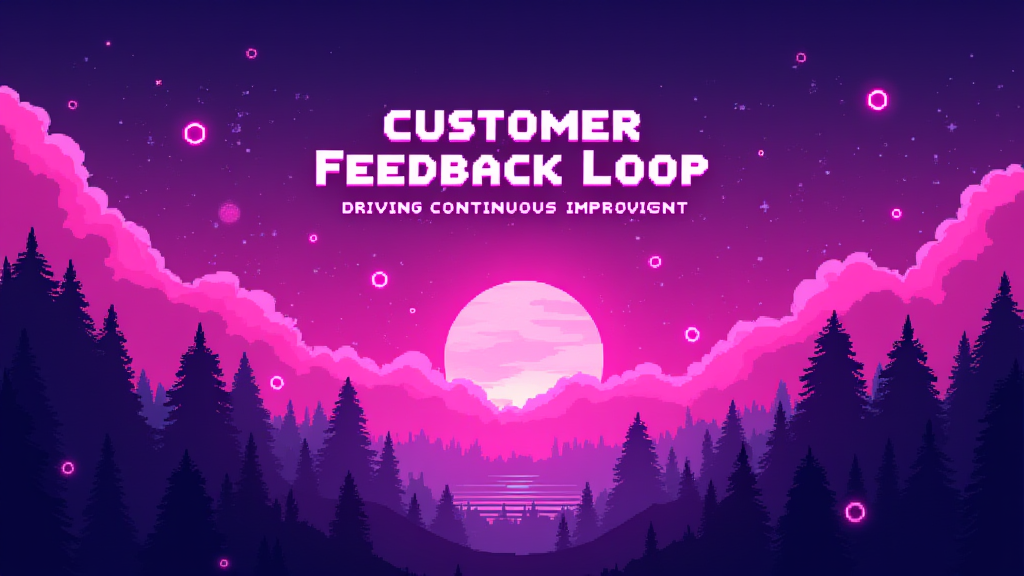Customer Feedback Loop: Driving Continuous Improvement

Published on: October 01, 2024
In the dynamic world of business, understanding and responding to customer needs is crucial for success. A Customer Feedback Loop is a powerful tool that enables organizations to systematically collect, analyze, and act on customer feedback, creating a continuous cycle of improvement. 🔄
What is a Customer Feedback Loop?
A Customer Feedback Loop is a structured process that allows companies to gather insights from their customers, implement changes based on those insights, and then measure the impact of those changes. This cyclical approach ensures that businesses remain customer-centric and adaptable in an ever-changing market landscape.
The Four Stages of a Customer Feedback Loop
- Collect: Gather feedback through various channels (surveys, reviews, social media, etc.)
- Analyze: Interpret the data to identify patterns, trends, and areas for improvement
- Act: Implement changes based on the insights gained
- Follow-up: Communicate actions taken to customers and measure the impact
Why is a Customer Feedback Loop Important?
Implementing a robust Customer Feedback Loop offers numerous benefits for Sales, Marketing, and Revenue Operations:
- 🎯 Improved product-market fit
- 📈 Increased customer satisfaction and loyalty
- 💡 Identification of new opportunities for growth
- 🛠️ Enhanced problem-solving capabilities
- 🤝 Stronger customer relationships
Best Practices for Implementing a Customer Feedback Loop
To maximize the effectiveness of your Customer Feedback Loop, consider the following best practices:
- Use multiple feedback channels: Diversify your feedback collection methods to capture a wide range of customer perspectives.
- Act quickly: Respond to feedback promptly to show customers that their input is valued.
- Close the loop: Inform customers about the actions taken based on their feedback.
- Involve cross-functional teams: Ensure that insights are shared across departments for comprehensive improvements.
- Measure and iterate: Continuously assess the impact of changes and refine your approach.
Common Challenges in Implementing a Customer Feedback Loop
While the benefits of a Customer Feedback Loop are clear, organizations may face some challenges in implementation:
- 🔍 Difficulty in collecting representative feedback
- 📊 Analyzing large volumes of qualitative data
- ⏱️ Balancing speed of response with thorough analysis
- 🔄 Maintaining consistency across feedback cycles
- 🧠 Overcoming organizational resistance to change
Measuring the Success of Your Customer Feedback Loop
To evaluate the effectiveness of your Customer Feedback Loop, consider tracking these key metrics:
| Metric | Description |
|---|---|
| Net Promoter Score (NPS) | Measures customer loyalty and likelihood to recommend |
| Customer Satisfaction Score (CSAT) | Assesses overall customer satisfaction |
| Customer Effort Score (CES) | Evaluates the ease of customer interactions |
| Churn Rate | Tracks customer retention over time |
| Revenue Growth | Measures the financial impact of improvements |
By implementing a robust Customer Feedback Loop, organizations can foster a culture of continuous improvement, enhance customer satisfaction, and drive sustainable growth. 🚀
Implementing a Customer Feedback Loop in Your Organization
As you consider implementing or improving your Customer Feedback Loop, ask yourself these questions:
- What channels are we currently using to collect customer feedback?
- How quickly do we respond to customer insights?
- Are we effectively communicating changes to our customers?
- How can we better integrate feedback into our decision-making processes?
- What metrics should we track to measure the success of our Customer Feedback Loop?
By addressing these questions, you'll be well on your way to creating a more customer-centric organization that thrives on continuous improvement and innovation.
















